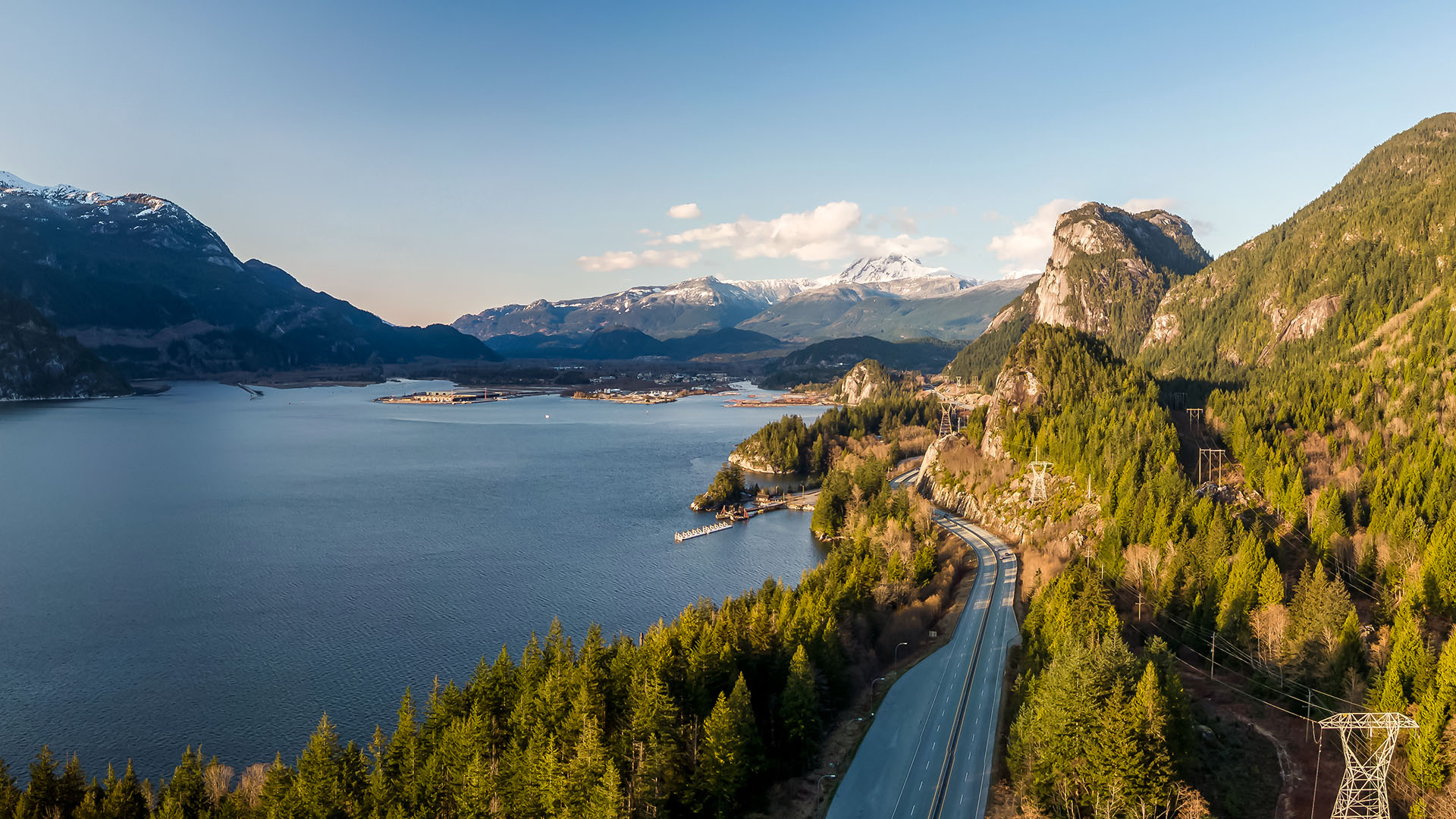Vancouver is one of Canada’s densest, most ethnically diverse cities, with a dynamic arts and music scene and world-class dining. Still, perhaps what is most striking is the city’s setting. Enveloped by the Georgia Strait and the North Shore Mountains, Vancouver is also home to one of North America’s largest urban parks and old-growth forests.
Indeed, one of the most remarkable things about this spirited seaport city is that Vancouver’s urban center is surrounded by wilderness, much of which can be explored by a variety of trails.
Thanks to Vancouver’s moderate climate, many of the city’s mountains, parks and forests can be explored year-round. Just keep in mind that longer routes can be dangerous for inexperienced or unprepared hikers, especially during fall and winter (some trails close during this time). Always check weather conditions, pack appropriate gear and follow hiking safety protocol before hitting the trail.
Here are six of the top Vancouver hikes:
1. Beaver Lake Trail, Stanley Park
You’ll find Beaver Lake Trail in Stanley Park, a 1,001-acre expanse located next to downtown Vancouver. Bring along your camera and snap scenic shots of the West End’s apartment buildings, English Bay Beach and the bustling inner harbor’s boats and seaplanes.
This hike takes you through diverse terrain and can be walked any time of year. Access to the Beaver Lake Trail starts from the Stanley Park Seawall (a 6.2-mile seawall loop around Stanley Park) and takes you through ancient forest lined with cedar, hemlock and Douglas fir trees and then leads to the lake, where you can watch ducks, herons and other wildlife.
Difficulty: Easy
Distance: 2.5 miles
Duration: 2 hours
2. Trans Canada Trail, Burnaby Mountain
A 35-minute drive east from Vancouver, this year-round hike on Burnaby Mountain is part of a network of 26 multi-use trails that cross more than 1,400 acres within the Burnaby Mountain Conservation Area.
The Trans Canada Trail starts from the east side of the Pipeline Trail along North Road and leads to the top of the mountain. Hikers are rewarded with a fabulous panorama of the North Shore Mountains and Burrard Inlet, a long, shallow fjord that winds its way from the ocean to Port Moody in the northeast.
The trail takes you back down the mountain and will cross several other trails along the way where you can observe the different pathways on the mountain.
Difficulty: Easy
Distance: 4.6 miles
Duration: 3 hours
3. Dog Mountain Trail
Starting from Mount Seymour, one of three ski mountains on Vancouver’s North Shore, Dog Mountain Trail is a short, easy hike. More than worth the 50-minute drive from downtown Vancouver, this trail gives hikers a spectacular view of the forest, Vancouver skyline and harbor, and the distant peaks of Vancouver Island.
While the trail has minimal elevation gain and is only about 3 miles round-trip, it should be noted that the path is a bit more technical, requiring careful steps along several sections that are covered with slippery tree roots, even between June and October when this trail is open.
Difficulty: Easy
Distance: 3 miles
Duration: 3 hours
4. Second Peak Trail at Stawamus Chief Mountain
Drive one hour to Squamish, where you’ll find Stawamus Chief Mountain towering over the town. Second Peak Trail is one of three peak trails on the world’s second -largest granite monolith.
Because Second Peak is the middle summit, with the First Peak to the south and the Third Peak to the north, the trail rewards hikers with sightings of the Chief’s other peaks plus views of the expansive Howe Sound (North America’s southernmost fjord) and several mountains in Garibaldi Provincial Park.
Be sure not to miss the most spectacular sight of a huge slab of granite that hangs over the trail.
Note: This hike is only possible between March and November, weather permitting.
Difficulty: Intermediate
Distance: 3 miles
Duration: 6 hours
5. Alpine Trail, Crown Mountain
The rugged Alpine Trail hike to Crown Mountain, behind Grouse Mountain, on Vancouver’s North Shore may be very difficult, but on a clear day, you will see views of the Capilano Reservoir, the snow-covered Lions peaks of the North Shore Mountains, and the distant city of Vancouver, as well as many coastal mountains.
To access the trail, head to the peak of Grouse Mountain and register your hike with Lynn Headwaters Regional Park. Start the Alpine Trail and head across the eastern slopes of Dam Mountain. The trail winds toward a small pass between Goat and Little Goat mountains, which leads toward Crown Pass.
With the aid of fixed chains, you will embark on a steep, and often slippery, descent into Crown Pass, after which you will begin the ascent to Crown Mountain. This intense hike gains elevation fast, rising through the forest and passing imposing cliffs until you reach Beauty Peak, taking about three hours to get to the top. Enjoy the views before retracing your steps back down the mountain. This hike is long and can be dangerous in wet conditions — be sure to leave ample time to complete the route before nightfall.
Difficulty: Difficult
Distance: 6 miles
Duration: 6 – 7 hours
6. Foreshore Trail, Pacific Spirit Regional Park
Located in Pacific Spirit Regional Park, the Foreshore Trail is a scenic coastal route perfect for beach lovers. The hike takes amblers around the forested west side of the University of British Columbia and passes through rocky Wreck Beach (Vancouver’s only nudist beach; a great place to stop to soak up some sun during the summer) and Acadia Beach, popular with sunbathers.
With remarkable views of the Strait of Georgia, Bowen Island and the entrance to Howe Sound, this hike is a showstopper. More than half of the trail follows the beach, which is rocky and can be slippery and challenging at times during high tides. Beware: Sections of the trail have eroded.
Difficulty: Intermediate
Distance: 3 miles
Duration: 3 hours




